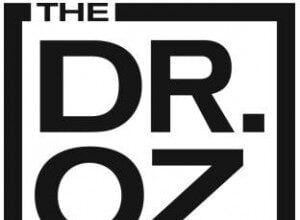In the same week that my company introduced Windows “10” to the world, I was contemplating a 10 of a different kind while on a business trip to Singapore. During one of my business meetings there with a prominent physician leader from the Ministry of Health I was asked about my impression of Singapore. My last visit to this sovereign, city-state island nation in Southeast Asia was about six years ago. Since then, the skyline of Singapore has changed dramatically.
In the same week that my company introduced Windows “10” to the world, I was contemplating a 10 of a different kind while on a business trip to Singapore. During one of my business meetings there with a prominent physician leader from the Ministry of Health I was asked about my impression of Singapore. My last visit to this sovereign, city-state island nation in Southeast Asia was about six years ago. Since then, the skyline of Singapore has changed dramatically.
Every time I peered out the window of my hotel room I was reminded that Singapore is one of the world’s major commercial hubs. It also claims the third highest per capita income in the world and ranks highly internationally in education, economic competitiveness, and  healthcare. So when asked about my impression of Singapore, what else could a say but “amazingly modern, technologically advanced, clean, beautiful, and seemingly quite efficient”. Its 5.4 million people receive healthcare that is ranked 6th in the world by WHO. The country has the lowest infant mortality rate in the world and places 4th in the world for a life expectancy of 80 for males and 85 for females. Immunization rates are high and obesity is below 10 percent. In other words, I’d have to give Singapore an all-around “10” compared to many of the countries I visit on business these days.
healthcare. So when asked about my impression of Singapore, what else could a say but “amazingly modern, technologically advanced, clean, beautiful, and seemingly quite efficient”. Its 5.4 million people receive healthcare that is ranked 6th in the world by WHO. The country has the lowest infant mortality rate in the world and places 4th in the world for a life expectancy of 80 for males and 85 for females. Immunization rates are high and obesity is below 10 percent. In other words, I’d have to give Singapore an all-around “10” compared to many of the countries I visit on business these days.
Over the course of two frenetic days, I met with healthcare executives, government officials, clinicians, and technology partners. Not surprisingly, when I asked health leaders what was top of mind for them in Singapore I got an answer that mirrored almost exactly what their American counterparts might say—improving the quality of care, improving access to care, and lowering the cost of care. As it is, Singapore spends less on healthcare than most other developed nations. It does this by putting significant emphasis on personal responsibility. 85 percent of the population participates in a compulsory health savings plan called Medisave. There is also a Medifund plan providing a healthcare safety net, and a Medishield government-funded health insurance program. Pharmacists in Singapore have prescribing privileges and play an important role in the provision of some primary care services. Although private healthcare services are plentiful for those willing to pay extra, my colleagues who live in Singapore tell me that when it comes to high quality, predictable, and consistent healthcare services they have more trust in the public system than the private.
 Having come to this city-state immediately after doing a “Clinical Mobility Roadshow” in Australia, I found clinicians in Singapore equally interested in clinical mobility and mobile devices. Other hot topics included analytics and cloud services. As is still the case in America, about 25 percent of private practice physicians in Singapore are not yet using electronic medical records. There are both generational and practical reasons for this, but I do believe the new crop of highly mobile, touch-friendly tablet and convertible computing devices that have come to market will help turn the tide for some of those holdouts in Singapore still practicing with pen and paper. By almost any other measure, the use of technology in Singapore is high. I saw technology being used in automobiles, hospitality, retail and finance that is far beyond what one commonly sees in America.
Having come to this city-state immediately after doing a “Clinical Mobility Roadshow” in Australia, I found clinicians in Singapore equally interested in clinical mobility and mobile devices. Other hot topics included analytics and cloud services. As is still the case in America, about 25 percent of private practice physicians in Singapore are not yet using electronic medical records. There are both generational and practical reasons for this, but I do believe the new crop of highly mobile, touch-friendly tablet and convertible computing devices that have come to market will help turn the tide for some of those holdouts in Singapore still practicing with pen and paper. By almost any other measure, the use of technology in Singapore is high. I saw technology being used in automobiles, hospitality, retail and finance that is far beyond what one commonly sees in America.
Mainly what I observed during this visit was a hunger and enthusiasm for technologies that will continue to place Singapore in the top ranks of the world’s economies. Whether in health, or any other sector, Singapore is leading the way in defining what a contemporary, efficient, highly productive nation can deliver to its citizens and all those who call it home.






